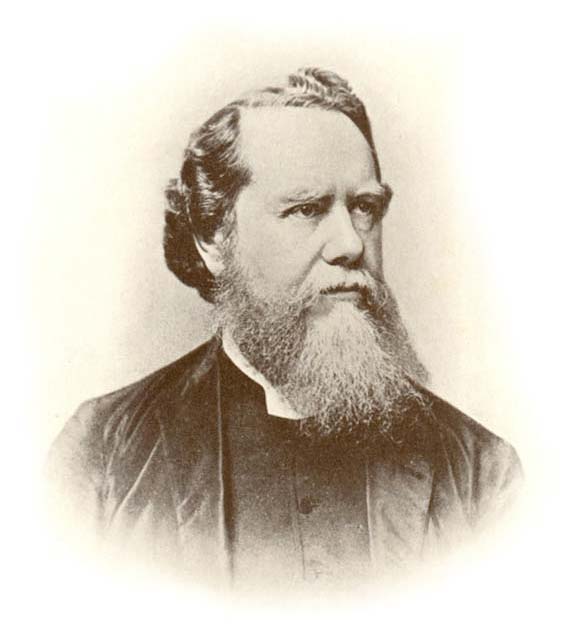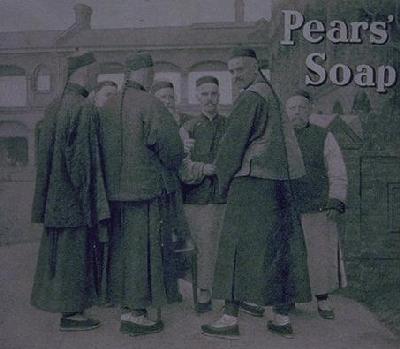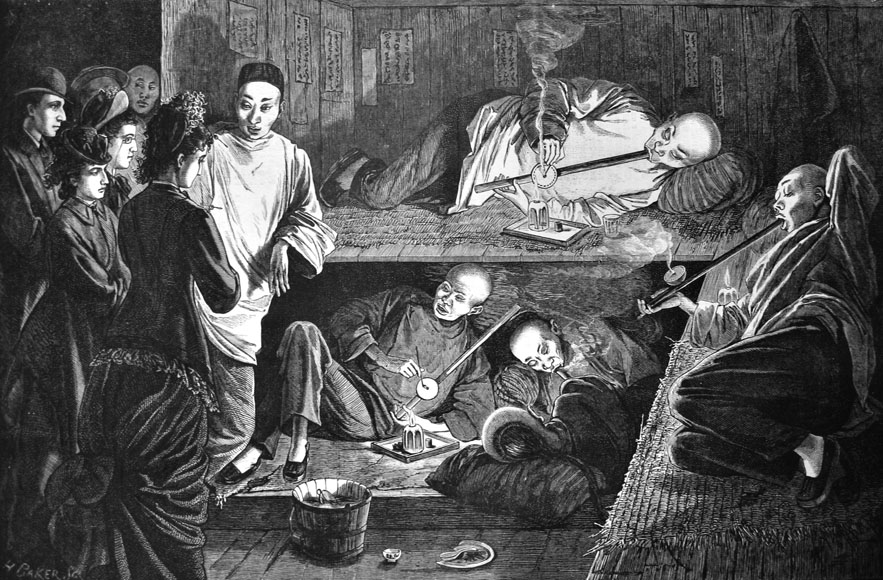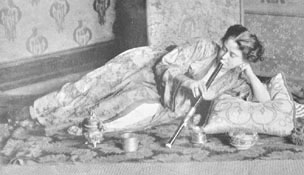【古约翰】戴德生 --- 内黄 楚旺

orn 21 May 1832 (1832-05-21) Barnsley, Yorkshire, England
Education Royal College of Surgeons
Died June 3, 1905, Changsha, China
Spouse Jennie Faulding Taylor (m. 1871–1904), Maria Jane Taylor (m. 1858–1870)
Children Frederick Howard Taylor, Herbert Hudson Taylor
Books A Retrospect, Union and Communion: A Devotio, Union and Communion Or - Thoug, China's Spiritual Need and, A Ribband of Blue: And Othe
Similar People Amy Wilson Carmichael, Herbert Hudson Taylor, Jennie Faulding Taylor, Jonathan Goforth, Jim Elliot
James Hudson Taylor (Chinese: 戴德生; 21 May 1832 – 3 June 1905) was a British Protestant Christian missionary to China and founder of the China Inland Mission (CIM, now OMF International). Taylor spent 51 years in China. The society that he began was responsible for bringing over 800 missionaries to the country who began 125 schools and directly resulted in 18,000 Christian conversions, as well as the establishment of more than 300 stations of work with more than 500 local helpers in all eighteen provinces.

First visit to China
Taylor left England on 19 September 1853 before completing his medical studies, arriving in Shanghai, China, on 1 March 1854. The nearly disastrous voyage aboard the clipperDumfries through an Easterly passage near Buru Island lasted about five months. In China, he was immediately faced with civil war, throwing his first year there into turmoil.
Taylor made 18 preaching tours in the vicinity of Shanghai starting in 1855, and was often poorly received by the people, even though he brought with him medical supplies and skills. He made a decision to adopt the native Chinese clothes and queue (pigtail) with shaven forehead, however, and was then able to gain an audience without creating a disturbance. Previous to this, Taylor realised that wherever he went he was being referred to as a "black devil" because of the overcoat he wore. He distributed thousands of Chinese Gospel tracts and portions of Scripture in and around Shanghai. During his stay in Shanghai, he also adopted and cared for a Chinese boy named Hanban.
Scottish evangelist, William Chalmers Burns, of the English Presbyterian Mission began work in Shantou, and for a period Taylor joined him there. After leaving he later found that all of his medical supplies, being stored in Shanghai, had been destroyed by a fire. Then in October 1856, while travelling across China he was robbed of nearly everything he owned.
Relocated in Ningbo by 1857, Taylor received a letter from a supportive George Muller which led to Taylor and his co-worker John Jones deciding to resign from the problematic mission board which had sent them, and instead work independently in what came to be called the "Ningbo Mission". Four Chinese men joined them in their work: Ni Yongfa, Feng Ninggui, Wang Laijun, and Qiu Guogui.
In 1858, Taylor married Maria Jane Dyer, the orphaned daughter of the Rev. Samuel Dyer of the London Missionary Society, who had been a pioneer missionary to the Chinese in Penang, Malaysia. Hudson met Maria in Ningbo where she lived and worked at a school for girls which was run by one of the first female missionaries to the Chinese, Mary Ann Aldersey.
As a married couple the Taylors took care of an adopted boy named Tianxi while living in Ningbo. They had a baby of their own that died late in 1858. Their first surviving child, Grace, was born in 1859. Shortly after she was born, the Taylors took over all of the operations at the hospital in Ningbo that had been run by William Parker. In a letter to his sister Amelia Hudson Taylor he wrote on 14 February 1860,
Because of health problems, in 1860 Taylor decided to return to England for a furlough with his family. The Taylors sailed back to England aboard the tea clipper Jubilee along with their daughter, Grace and a young man, Wang Laijun, from the Bridge Street church in Ningbo, who would help with the Bible translation work that would continue in England.
Family and China Inland Mission
============

https://alchetron.com/Jonathan-Goforth-1201598-W


Born February 10, 1859 (1859-02-10) Canada, North America
Spouse Rosalind Goforth (m. 1887–1936)
Children Gertrude Madeline Goforth, Donald Goforth
Parents Jane Bates, Francis Goforth
Books "By My Spirit", When the Spirit's Fire Swept Ko, Miracle Lives of China
Similar People Rosalind Goforth, Hudson Taylor, James O Fraser, John Sung, Griffith John
Jonathan Goforth (Chinese: 顧約拿單, February 10, 1859 – October 8, 1936) was the first Canadian Presbyterian missionary to China with the Canadian Presbyterian Mission, with his wife, Rosalind (Bell-Smith) Goforth. Jonathan Goforth became the foremost missionary revivalist in early 20th century China and helped to establish revivalism as a major element in Protestant China missions.
Goforth grew up on an Oxford County, Ontario farm, the seventh of eleven children. As a young man he taught school in Thamesford, Ontario. Hearing fellow-Oxford County native George Leslie Mackay, Presbyterian missionary to Taiwan, speak, he sensed a call from God to go to China. He attended University of Toronto, and Knox College, where he graduated in 1887, and was awarded the Doctor of Divinity in 1915. During his training, Goforth met Rosalind Bell-Smith at the Toronto Union Mission. She had been born in London, England, and had grown up in Montreal. They married in 1887, in his final year at Knox, and eventually had eleven children, six of whom survived childhood.
Goforth was greatly supported by his classmates to become an overseas missionary. He had also read the book by Hudson Taylor: China's Spiritual Need and Claims, a book that he ordered many copies of and mailed them to many pastors that he knew to promote missionary work in China.
The Goforths returned to Canada for a year. After their return to Henan in 1901, Jonathan Goforth felt increasingly restless. In 1904 and 1905 he was inspired by news of the great Welsh revival and read Charles Finney's "Lectures on Revivals". In 1907, circumstances brought him to witness firsthand the stirring Korean revival ("When the Spirit's Fire Swept Korea" [1943] represents his response). As he returned to China through Manchuria, congregations invited him back in early 1908. During this extended visit there occurred the unprecedented "Manchurian revival". It was the first such revival to gain nationwide publicity in China as well as international repute. The revival transformed Goforth's life and ministry; from then on he was primarily an evangelist and revivalist, not a settled missionary. He also became one of the best known of all China missionaries, admired by many, but criticized by some for "emotionalism."
In 1925, he decided to remain within the Presbyterian Church in Canada, and his Henan station was transferred to the support of the United Church of Canada. He and Rosalind, despite their age and frailities, were then sent by the PCC to begin work in Manchuria, where they remained until his eyesight failed in 1935. Goforth remained active into the 1930s, especially in Manchuria; in 1931 the Goforths coauthored "Miracle Lives of China". After his death in Toronto, Rosalind, a capable writer who had first published in 1920, wrote the popular "Goforth of China" (1937, with many reprints), and her own autobiography, "Climbing: Memories of a Missionary's Wife" (1940).
Their final years in Canada were spent recounting their stories to many congregations. He died at his son's manse in Wallaceburg, Ontario, after preaching the previous evening in nearby Wyoming, Ontario. The funeral service was held in Toronto's Knox Church, and he is buried in the Mount Pleasant Cemetery in the same city.
"I love those that thunder out the Word. The Christian world is in a dead sleep. Nothing but a loud voice can awake them out of it."
----------------

CHRISTIAN MISSIONARIES IN CHINA
Photographed by J. Martin Miller, war correspondent of The Graphic of London and Harper's Weekly of New York
![[?IMG]](http://i263.photobucket.com/albums/ii133/DefaultSetting/MaximgundemonstrationtoLiHongzhang18962.jpg)
李鸿章
Hiram Maxim (right) demonstrates his machine gun to Li Hongzhang (second from the right) in 1896.?
![[?IMG]](http://i263.photobucket.com/albums/ii133/DefaultSetting/RocketofChina1.jpg)
![[?IMG]](http://i263.photobucket.com/albums/ii133/DefaultSetting/ZhanTianyou2.jpg)
![[?IMG]](http://i263.photobucket.com/albums/ii133/DefaultSetting/Tangshanlocomotive2.jpg)
![[?IMG]](http://i263.photobucket.com/albums/ii133/DefaultSetting/n_china_1912.jpg)
![[?IMG]](http://i263.photobucket.com/albums/ii133/DefaultSetting/sunyatsenrailplan.jpg)
![[?IMG]](http://i263.photobucket.com/albums/ii133/DefaultSetting/Bundesarchiv_Bild_134-B1511_Tsingtau_Besitznahme_von_Kiautschou.jpg)
The German landing at Qingdao, 1897.?
![[?IMG]](http://i263.photobucket.com/albums/ii133/DefaultSetting/PaquebotLatouche-Treacuteville_zpsfd10b5a5.jpg)
![[?IMG]](http://i263.photobucket.com/albums/ii133/DefaultSetting/Qingdaogeneralview.jpg)
General view of Qingdao in 1914.?
![[?IMG]](http://i263.photobucket.com/albums/ii133/DefaultSetting/Qingdaodefenses1914.jpg)
Layout of Qingdao's military defenses.?
![[?IMG]](http://i263.photobucket.com/albums/ii133/DefaultSetting/ChineseLabourCorps_zps05b11554.jpg)
Members of the Chinese Labor Corps assembled at Weihaiwei.?
![[?IMG]](http://i263.photobucket.com/albums/ii133/DefaultSetting/Vladivostokharbor_zpsc7d1aa10.jpg)
Vladivostok harbor in 1917.?
![[?IMG]](http://i263.photobucket.com/albums/ii133/DefaultSetting/Horvathandforeignofficers_zps0e5d719d.jpg)
Dmitry Horvath and representatives of the Entente powers in Harbin, 1918.?
![[?IMG]](http://i263.photobucket.com/albums/ii133/DefaultSetting/Liangsstatue.jpg)
Statue of Liang Qichao.?
![[?IMG]](http://i263.photobucket.com/albums/ii133/DefaultSetting/XuShichang2.jpg)
Xu Shichang.
![[?IMG]](http://i263.photobucket.com/albums/ii133/DefaultSetting/KangYouwei6.jpg)
![[?IMG]](http://i263.photobucket.com/albums/ii133/DefaultSetting/XinhaiRevolution.gif)
The Xinhai Revolution, 1911-1912.?
![[?IMG]](http://i263.photobucket.com/albums/ii133/DefaultSetting/LiYuanhong2.jpg)
Li Yuanhong.?


1909 Caucasian female opium smoker, from the Illustrated London News, Mar 13, 1909.




paul chalmers
==========
明嘉靖《彰德府志卷一》对这一战争有记载,对“行至安阳”一说提出了合理的根据。它说:安阳县“自秦至隋四迁,秦故城在州东南四十三里,近内黄县”,即今楚旺镇。旧《内黄县》对此也有明确记载,该书的“陵墓”条曰:“楚将宋义墓,在县西北楚王镇。秦将章邯围赵钜鹿,楚以宋义为上将军救之,至安阳逗留不进,日与子襄饮酒,不恤士卒,项羽谏不听,即帐中杀之,遂葬此地”。同书“祠庙”条载:“楚王庙在县西北楚王镇,祀项羽。羽尝以宋义救赵不进,即帐中斩义,进军破秦将章邯钜鹿城下,后遂为羽立庙,故镇名曰楚王”。同书又载,明天启《重修楚王庙碑记》云:“楚王堡,即王(项羽)杀宋义故地,有宋冢在焉”。这个地方为什么要修楚王庙以祀项羽呢?碑记云:项羽“一杀义,而解赵围,军民苏,(内)黄亦免城门之殃,备三善焉。”由此可见,宋义逗留之日,有扰地方百姓,项羽杀宋义,合民心,率兵渡河,解了赵围,也为这里一带百姓避免了兵祸,所以这里的老百姓才修庙祀项羽。
翻开《战国史志》,上记载楚旺镇史称“繁阳古城”。她南拥金堤,北望燕赵,东通齐鲁,西接太行,横跨冀、鲁、豫三省,坐落卫水、漳河之间。楚旺镇人杰地灵民风淳朴,商贾云集,农商并茂。古有“金彭城、银水冶,不如楚旺一斜街”之说,又有“日进斗金”之誉。为什么这里又改名叫楚旺镇呢?
相传,项羽自立为楚霸王后,返回繁阳城,带领百姓开荒种田,新造家园,修城建堡,把个繁阳城建设得井然有序,繁华似锦。当时,流传着这样一句话:“金彭城,银水冶,比不上繁阳一斜街。”
不知又过了几百年,一天晚上,繁阳城里红烟四起,蓝光闪闪,只见一人骑着战马不停地高喊:“谁敢杀我!”搅得百姓惶惶不安。原来是宋义的魂魄来了。老百姓为了震慑宋义的气焰,同时也为了纪念项羽,就在繁阳城街中心塑了一个项羽像,并把繁阳城改名为楚王城。到了清朝乾隆年间,一次乾隆巡视来到楚王城,他看到这里的百姓安居乐业,禾苗茁壮成长,草木郁郁葱葱,街道整齐清洁,一派兴旺发达、蒸蒸日上的景象。乾隆皇帝很高兴,就把楚王城改为楚旺城,希望这里永远兴旺。
楚旺镇史称楚王、楚祠里、楚旺堡,因纪念楚霸王项羽而得名。
境内卫河斜穿镇南,滑河屯沟横穿镇北,旧为漳河泛滥之域。

